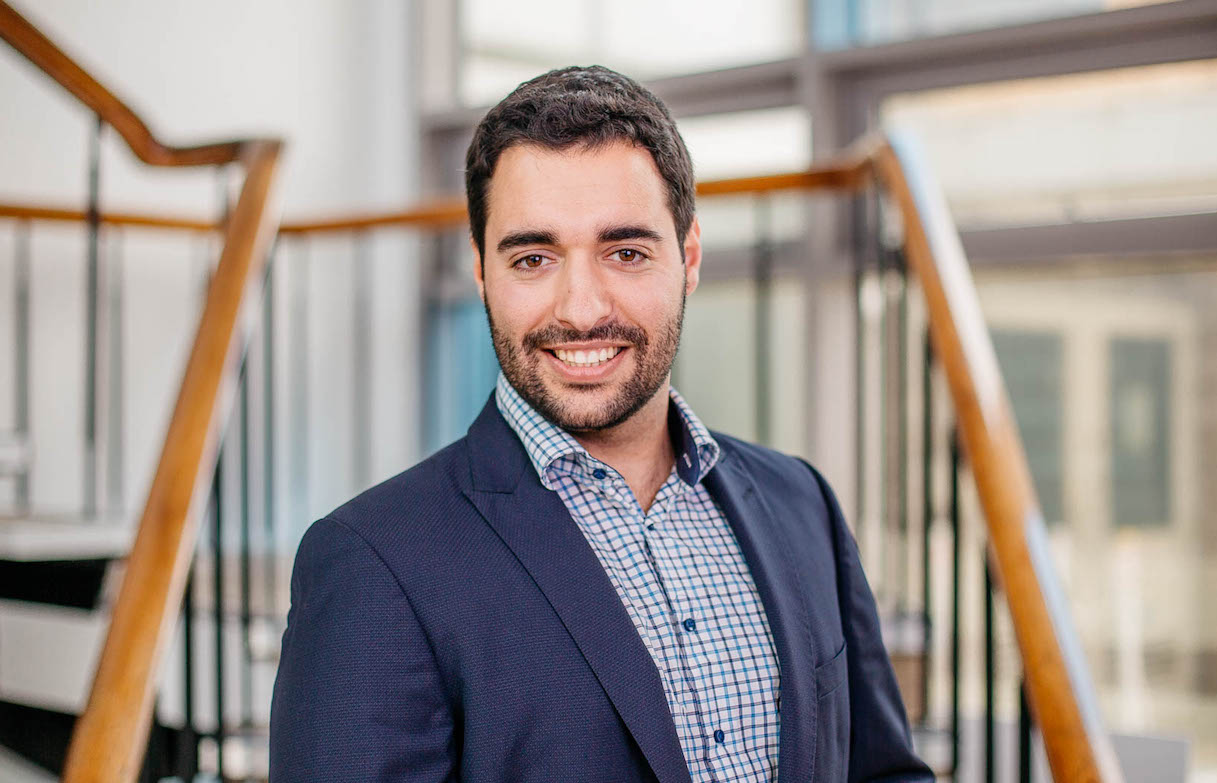Latest News

Open Cosmos CEO Rafel Jorda Siquier. Photo: ESA
Open Cosmos is a company to watch in the European Earth observation (EO) market as it looks to bring the benefits of small satellites to enterprises all over the world. Open Cosmos recently announced a strategic partnership with Connected, a Portuguese startup committed to universal and affordable narrowband connectivity from space. The two companies plan to work together to bring a series of data solutions to the market.
Open Cosmos launched four satellites last year, and recently launched its latest satellite in March. Its latest satellite, HAMMER, (Hyperspectral AI for Marine Monitoring and Emergency Response), is an in-orbit demonstration that hosts a miniaturized EO payload alongside integrated onboard processing capabilities, developed by Ubotica Technologies. The satellite will acquire, process, compress, store, and forward medium-resolution hyperspectral imagery for Atlantic coastal and high sea areas.
HAMMER aims to give a quick and effective response to natural disasters due to its compatibility and interoperability with existing EO networks, enabling collaboration with other satellites and ground-based systems for comprehensive monitoring and emergency response.
Open Cosmos’s satellites in orbit are equipped with a wide range of optical payloads including multispectral, hyperspectral and short wave infra-red imagery (SWIR).
Open Cosmos CEO and founder Rafel Jorda Siquier tells Via Satellite that this technology, combined with onboard AI process capabilities and inter-satellite links, allow the company to provide real-time data for informed decision-making. “Open Cosmos stands out by not just providing satellite data, but by increasing the frequency and granularity of insights,” he says.
The partnership with Connected will be at the heart of what both companies look to achieve over the next few years. Siquier believes the combination of the two companies can provide integrated services and comprehensive solutions to its customers, enabling the launch of end-to-end small satellite missions to Low-Earth Orbit (LEO), focusing on joint EO and In-Situ measurements enabled by IoT connectivity.
“Its goal is to maximize the integration of these complementary payloads into orbit, sustainably maximizing the collection of data from Earth while preserving the balance of the space ecosystem. Additionally, this collaboration is also a great example of meaningful international commercial cooperation. It not only generates knowledge and economic value but propels progress towards a sustainable future on Earth and in space,” Siquier added.
Connected is on a mission to make universal, standardized, and affordable narrow-band Internet-of-Things (NB-IoT) connectivity from space a reality, Siquier says. Additionally, he believes integrating EO and in-situ data in Open Cosmos cloud-based DataCosmos platform is a real game changer.
“This powerful interface brings together different types of satellite imagery, data from complementary sources, results from algorithms and a roster of applications to make satellite-based data collection useful and valuable to organizations looking to monitor and improve their impact on the planet,” he says.
It is a strategic partnership to watch in Europe. “We are not only advancing Connected’s mission to become the world’s first connectivity service to be fully hosted on-board third-party satellites, we are also contributing to the broader goal of fostering sustainable solutions for in-situ data collection on Earth,” says Siquier.
Open Cosmos aims to offer cost-effective satellite solutions and efficient operations, making space more accessible for diverse applications. It will provide end-to-end mission management solutions. From the design and manufacturing phase to launch and operations, Open Cosmos aims to ensure a seamless and integrated experience for clients. Siquier says this approach allows clients to concentrate on their specific applications, while Open Cosmos manages the complexities of the entire mission lifecycle.
Like with most high-tech companies in this area, it will be interesting to see how Open Cosmos uses Artificial Intelligence (AI).
“AI plays a crucial role in our operation. The integration of AI boards enables real-time, onboard data analysis, both for EO and in-situ data, enhancing responsiveness to dynamic environmental changes without ground station transmission and human intervention. This boosts efficiency, optimizes resource use, and enhances intelligence for disaster response, agriculture, and urban planning. Additionally, it increases autonomy for immediate decision-making in emergencies,” says Siquier.
Open Cosmos also hopes it can make a difference in the battle against climate change.
“Satellite data obtained through LEO networks enables real-time monitoring of environmental changes, facilitating early detection of issues such as deforestation, pollution, and climate-related events,” says Siquier. “This information can empower decision-makers to implement timely and effective measures to mitigate the impact of climate change.”
Get the latest Via Satellite news!
Subscribe Now